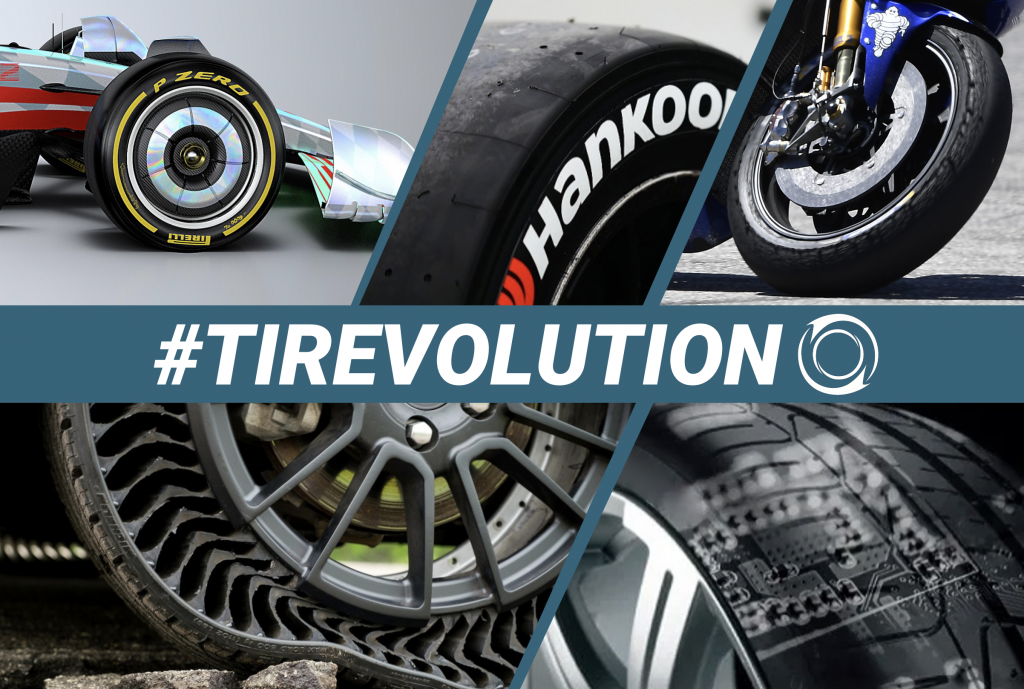2022 is preparing to be an incredibly innovative year for tires and motorsport fields.
The queen of the racing series, F1, will see the introduction of the 18 inches Pirelli tires, representing a substantial variation to the whole vehicles’ dynamics and to their aero, ride and handling response. Such apparently simple modification, attractively affecting the aesthetics of the cars, will significantly change the structure of the sidewallsand of the tire carcass, with deep effects on the cornering stiffness, on the mechanisms linked to temperature generation for SEL (Strain Energy Loss) phenomena and on the static and dynamic shape of the contact patch, responsible for grip and load sensitivity effects.
Formula E category will have to face another big change: the role of tires’ exclusive supplier will move from Michelin to Hankook, which already announced important innovations conceived to equip the GEN3 vehicles with specific materials characterized by low rolling resistance, and with a multi-purpose compound able to adapt to city tracks located at many different latitudes and climatic zones.
In MotoGP Michelin is ready to introduce a new front tire, declared as better for stability and designed to overcome some thermal issues experienced by several teams in the past seasons.
Three examples able to describe the revolutionary moment the tires and the motorsport are going to live, and for which we coined the hashtag #TIREVOLUTION. In the last months, our research activities and the projects carried out with MegaRide software and VESevo tire characterization device were deeply focused on the requests received by many racing teams, aimed to implement in their simulation architectures physical tire models to predict what’s going to happen in next season.
First information on the next tire specs is starting to leak out, and the advantage of a physical model allowing to modify the dimensional, structural, thermodynamic and viscoelastic parameters of a tire model is the possibility to introduce in the vehicle dynamics virtual platform a responsive preview of the effects induced by the variations that the tiremakers will bring. The time to get a competitive advantage is now, and who will be able to get the most reliable and robust output from the next tires effects, will get competitive advantage for 2022.

But not only motorsport. #TIREVOLUTION is an ongoing process for automotive and tiremaking markets. New technologies and materials are the trigger for industrial innovations, mainly concerning two “evolutions and revolutions”: smart tires and non-pneumatic (or airless) tires.
The first ones, nowadays in advanced development stage in many tire manufacturers R&D departments, are finally close to the final step to become industrial products. In a close future, the privileged observation position allowed by embedded sensors directly measuring at tire/road layer, will provide a continuous onboard data stream on interaction forces (and consequently adherence) and on the progressive tread wear and degradation level. Connected and autonomous driving vehicle will benefit from such technologies, and the application in racing sector is under discussion, too. Which tiremaker will arrive first?
Also NPTs have become widespread commercial products, with applications first just related to military field, and now able to range from light city vehicles to large agricultural or mine ones. Their potentially indestructible and undeflatable structure is bringing to the adoption of new materials and spokes topology, able to improve the characteristics and progressively reduce the limits related to the high rolling resistance of the airless tires.
In both the cited tire innovations, the product digitalization is leading the development process, speeding up the implementation of logics for the interpretation and the robust management of the data from the sensored tires, and the prediction of the thermal and handling effects that airless prototypal structures induce.